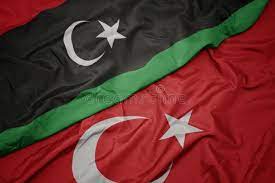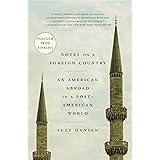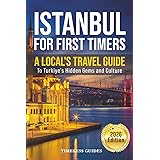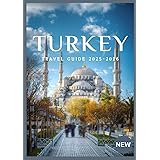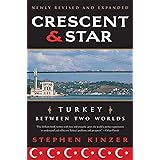Turkey’s presence in Libya means ensuring the survival of the GNA, whose legitimacy is recognized by the UN, and at the same time protecting the unity and integrity of the Libyan people against imperial powers, and guaranteeing their independence and internal peace.
Ahmed Cevdet Pasha strongly stated that “A politician who does not know history is like a captain of a ship who does not know a compass”, and that statesmen will find correct solutions to the problems they face by looking at them from a historical perspective. Let’s try to present a historical perspective here today.
After Phoenician, Carthage, Greek, Roman and Byzantine domination, Hz. During the reign of Omar, the army under the command of Amr bin As moved towards Tripoli and Tunisia after Egypt in 642 . In 647, victory was won in Tripoli with Uqbe bin Nafi. The conquest of North Africa was completed in 707 by Hassan bin Nu’man and Musa bin Nusayr. Tariq bin Ziyad conquered Spain in 711 and brought Islam to Europe from the southwest.
In order to ensure internal peace and security in North Africa, Harun Reşid appointed İbrahim bin Ağleb, the son of one of his emirs, as governor of Libya in 800. and he established the Ağlebiler (800-909) dynasty, which would rule Tunisia under the Abbasid caliph, with his own hands. After the domination of the Fatimid State (909-1049) and the Almohad State (1160-1178), the Slave commander Şerefeddin Karakuş under the command of Salahaddin Ayyubid, with the expeditions he started in 1174, the policy of reintegrating North African cities such as Tripoli, Kayrevan and Tunisia into Egypt. acted within the framework. In 1185 he captured the city of Tripoli. The most important result of the campaigns of Karakuş and his friends and their domination until 1212 is that the Oghuzs in their troops participating in the North African expedition made their presence permanent. The Oghuzes continued their existence as military units called “guz” and “gazaz” in the state of the Almohads. The Gazaz tribe living in Yefrin today probably dates from those days. After the Almohads,Except for the interregnum period, the Hafsids dominated Libya for a long time (1228-1323 and 1369-1510).
Hafsids and Ottomans
Acting with the crusader ideology, the Spaniards, after putting an end to the Islamic presence in Andalusia step by step, turned towards North Africa with all their strength. In 1510, the Castilian army occupied Tripoli, which was dominated by the Hafsids, and put its people to the sword. Those who saved their lives evacuated Tripoli and fled into the country or were exiled.

The most basic question to be asked is, “What is Turkey doing in Libya?” It’s not a question. Instead, “What are imperialist countries like the USA, Russia, France, Italy doing in Libya?” question should be asked.
Suleiman the Magnificent, who ascended the throne in 1520, provided the military aid requested by the delegation from Tacura in 1519, during the reign of his father, Sultan Selim. He sent a military fleet under the command of Murad Ağa. Murad Ağa established a strong resistance center in Tajura. Three years after Tripoli was given to the Maltese knights by Emperor Charles V in 1530, Kaptanıderyâ Barbaros Hayreddin Pasha re-conquered the city. However, this conquest did not last long with the Spanish counterattacks and the struggle for dominance in the city continued. At the end of this struggle, which lasted for 32 years, Tripoli joined the Ottoman lands on 15 August 1551 with the forces of Kaptanıderyâ Sinan Pasha, Turgut Reis and Murad Ağa.
After the conquest, Murad Agha became the governor of Tripoli (1551-1553). After his death, Turgut Reis (1553-1565) came to the governor’s office and united the coastal part of the country and the desert region socially, politically and economically. Tripoli gained peace and prosperity during his reign. In the geography called “Libya” today, the Ottoman state had separate administrative centers under the names of Tripoli, Benghazi and Fizan. The quarries of Algeria, Tunisia and Tripoli were collectively called the “Occidental Hearths”. Although these quarries did not constitute a significant source of production and income for the central state, they served as an outpost in the Mediterranean for the defense of the Ottoman state and the Islamic world.
While the Ottoman state included young men of Christian origin in the Balkans to its central military organization, with the method of devshirme, it sent young men from Anatolia as soldiers to the Western Hearths in order to defend its lands in North Africa. Thus, the Ottoman Empire tried to develop the military capacity of the region, which had limited human resources in terms of military profession. By allowing these professional soldiers serving in Libya, Tunisia and Algeria to marry local girls, a generation of “Kuloğlu” emerged, whose numbers are now in the millions. “Kuloğulları” means soldiers of Anatolian origin, whose fathers are soldiers and their mothers are local people. In addition to the approximately 1000-2000 soldiers who are enlisted in the hearth every year,The number of Kuloğulları also increased arithmetically and they were employed in various civil service positions in the state and as a separate source of military force in the defense of the country.

Ahmed Şerîf went to Ankara on 15 November 1920 and met Mustafa Kemal at a dinner on 25 November. The Speaker of the Grand National Assembly of Turkey and the Commander-in-Chief presented Mustafa Kemal with a sword inlaid with jewels and a belt adorned with verses and hadiths. He sided with Atatürk during the War of Independence. He chaired the Great Islamic Conference convened in Sivas on Friday, February 18, 1921, by mobilizing all his might to support the National Struggle, saying “The Islamic world cannot get rid of the colony without Turkey’s independence” and “For the independence of Libya, we must first gain Turkey’s independence”. he did. Ahmed Sharif es-Senusi, with the assignment of Mustafa Kemal, carried out activities in order to unite the Arab tribes in Iraq against England.
As we entered the seventeenth century, the people who were appointed as Tripoli governor by sending from Istanbul had difficulties in maintaining their positions against the changing balances in the world and the Mediterranean. With the increase in world trade in terms of capacity and value and the deterioration of existing balances, the obligation to ensure the security of Mediterranean trade brought new risks. The Ocaklılar and Kuloğulları, who emerged as a new social, economic and military power behind them, took the lead against those sitting in the office of governor. Because the beylerbeyi knew that he would go to another job after serving for three years, that is, for a temporary period, he preferred to leave the main responsibility to “Uncle Ocaklı” and stay in a representative position instead of taking long-term actions.
Karamanlı Ahmed Bey, who became his uncle in 1711, enabled the sultan to take a decision that put an end to the practice of being a governor in this representative position. Ahmed Bey was given a privilege similar to the “regent of the sultan”, allowing him to establish a Karamanli dynasty in Tripoli. Until the end of the eighteenth century, naval raiding, which contributed partially to the Western Hearths of the Ottoman state, lost its importance in the face of modern armed merchant ships. In fact, the Governor Yusuf Pasha was in a difficult situation to compensate the damages suffered by the pirate raids of the ships, whose safety was guaranteed by the Tripoli governor in return for a certain price. Yusuf Pasha’s failure to take a position against Napoleon, who attacked Egypt, was also criticized in Istanbul.
In 1827, on top of the administrative crisis in Libya, the Ottoman navy was burned in Navarin by the joint navy of the European states. When developments such as the Greek revolt in the Eastern Mediterranean, the French occupation of Algeria in 1830 and the rebellion of Mehmet Ali Pasha were added to these, the necessary intervention in Tripoli was delayed. As a matter of fact, with the Tanzimat Fermanı declared in 1839, the province was connected to the center. The imperialist ambitions of France towards Tunisia and Libya as well as Algeria were known. Therefore, warm relations were established with the Gat, Tuareg (Tevârık), Ezgar and Hoggar tribes on the route to Fezzan and Central Africa. Steps were taken to ensure the safety of Sudan-Senegal, Sudan-Morocco caravan trade routes. However, when Egypt and then Sudan were occupied by the British in 1882,The stability and security environment established by the Ottomans took a heavy blow. Thus, the province suffered a significant loss of income and was waiting for the help from the center.
Tripoli sent three deputies to the Ottoman Assembly, which was established in 1877. In 1908, II. When the Constitutional Monarchy was declared, a total of eight deputies, one from Hums, two from Benghazi, three from Tripoli, one from Fezzan and one from Jabeligarb, represented Libya in the Parliament.
II. Abdulhamid’s Libya policy
Efforts were made to prepare the people against any invasion by establishing Hamidiye regiments, consisting of the children of tribal leaders and Kuloğulları in Libya. In order to repel attacks from the coast, weapons depots were set up at strategic defense points along the long coastline from Tunisia to the Egyptian border. On the other hand, in Tripoli, Fizan and Benghazi, sect sheikhs and tribal leaders, who were opinion leaders, were given medals and medals, and titles emphasizing loyalty to the Ottoman state were created. In this context, Sheikh Zafir Efendi, the leader of the Medeniyye sect, a branch of the Shazeliyye sect, which had an impact on the tribes in the region, II. He came to Istanbul at the invitation of Abdülhamid and received the title of his special adviser. During the reign of Sultan Abdulaziz, the support given to the Senusi zawiyas was increased and continued.Because, the Senusiyya sect was influential in the economic, political and social life of the region with its lodges on the trade route known as “Bilad al-Sudan trade”, which stretches from the Mediterranean to the sub-Saharan via Benghazi and Chad, and from there to Sudan at one end and Senegal and Morocco at the other end. . As a matter of fact, the members of the Senusiyya showed a very stable and strong resistance against the French and Italian imperialist expansion.
Ataturk and Libya
The sanjak of Fezzan was a place where the Ottoman state exiled the Young Turks. However, in the face of the colonial attacks of the Italians, medical and cadet Young Turks who were exiled in Fezzan at that time were employed in various areas of the province. Thus, they started to serve the Libyans in the positions of doctors, teachers and administrative officers in the province. Their presence, mingling with the people in Libya, strengthened rather than weakened the loyalty of local communities to the Ottoman caliph. So much so that in 1908 II. When the Constitutional Monarchy was declared, the Libyan people did not participate in the great joyful demonstrations of the Young Turks in Tripoli, and there were even those who reacted. Thereupon, the notables of the Union and Progress, the constitutional administration, the rule of law, equality,He sent Mustafa Kemal to Libya to explain what concepts such as justice and freedom meant. Mustafa Kemal, who was active in Libya to oppose the colonial Italians on an intellectual level, planted the seeds of freedom here. Mustafa Kemal, who resisted with only 5,500 soldiers against the Italians, who attempted to invade Libya with a hundred thousand soldiers in 1911, invited the people to join the resistance in order to increase the number of local soldiers as much as possible. Tripoli Commander Staff Colonel Neş’et Bey, Staff Major Ali Fethi (Okyar) Bey, Captain Nuri (Conker) Bey, Benghazi Commander Enver (Paşa) Bey, Kolağası Mustafa Kemal (Atatürk) Bey, Süleyman Askerî Bey and Kuşçubaşı Eşref Bey. With the successful work of the names, the Italians were almost imprisoned in the coastal parts and could not enter the inner parts of Libya.Mustafa Kemal, who was active in Libya to oppose the colonial Italians on an intellectual level, planted the seeds of freedom here. Mustafa Kemal, who resisted with only 5,500 soldiers against the Italians, who attempted to invade Libya with a hundred thousand soldiers in 1911, invited the people to join the resistance in order to increase the number of local soldiers as much as possible. Tripoli Commander Staff Colonel Neş’et Bey, Staff Major Ali Fethi (Okyar) Bey, Captain Nuri (Conker) Bey, Benghazi Commander Enver (Paşa) Bey, Kolağası Mustafa Kemal (Atatürk) Bey, Süleyman Askerî Bey and Kuşçubaşı Eşref Bey. With the successful work of the names, the Italians were almost imprisoned in the coastal parts and could not enter the inner parts of Libya.Mustafa Kemal, who was active in Libya to oppose the colonial Italians on an intellectual level, planted the seeds of freedom here. Mustafa Kemal, who resisted with only 5,500 soldiers against the Italians, who attempted to invade Libya with a hundred thousand soldiers in 1911, invited the people to join the resistance in order to increase the number of local soldiers as much as possible. Tripoli Commander Staff Colonel Neş’et Bey, Staff Major Ali Fethi (Okyar) Bey, Captain Nuri (Conker) Bey, Benghazi Commander Enver (Paşa) Bey, Kolağası Mustafa Kemal (Atatürk) Bey, Süleyman Askerî Bey and Kuşçubaşı Eşref Bey. With the successful work of the names, the Italians were almost imprisoned in the coastal parts and could not enter the inner parts of Libya.Mustafa Kemal, who resisted with only 5,500 soldiers against the Italians, who attempted to invade Libya with a hundred thousand soldiers in 1911, invited the people to join the resistance in order to increase the number of local soldiers as much as possible. Tripoli Commander Staff Colonel Neş’et Bey, Staff Major Ali Fethi (Okyar) Bey, Captain Nuri (Conker) Bey, Benghazi Commander Enver (Pasha) Bey, Kolağası Mustafa Kemal (Atatürk) Bey, Süleyman Askerî Bey and Kuşçubaşı Eşref Bey. With the successful work of the names, the Italians were almost imprisoned in the coastal parts and could not enter the inner parts of Libya.Mustafa Kemal, who resisted with only 5,500 soldiers against the Italians who attempted to invade Libya with around one hundred thousand soldiers in 1911, invited the people to join the resistance in order to increase the number of local soldiers as much as possible. Tripoli Commander Staff Colonel Neş’et Bey, Staff Major Ali Fethi (Okyar) Bey, Captain Nuri (Conker) Bey, Benghazi Commander Enver (Pasha) Bey, Kolağası Mustafa Kemal (Atatürk) Bey, Süleyman Askerî Bey and Kuşçubaşı Eşref Bey. With the successful work of the names, the Italians were almost imprisoned in the coastal parts and could not enter the inner parts of Libya.With the successful efforts of important names such as Staff Major Ali Fethi (Okyar) Bey, Captain Nuri (Conker) Bey, Benghazi Commander Enver (Paşa) Bey, Kolağası Mustafa Kemal (Atatürk) Bey, Süleyman Askerî Bey and Kuşçubaşı Eşref Bey, the Italians were almost imprisoned in the coastal areas. and they were unable to enter the interior of Libya.With the successful efforts of important names such as Staff Major Ali Fethi (Okyar) Bey, Captain Nuri (Conker) Bey, Benghazi Commander Enver (Paşa) Bey, Kolağası Mustafa Kemal (Atatürk) Bey, Süleyman Askerî Bey and Kuşçubaşı Eşref Bey, the Italians were almost imprisoned in the coastal areas. and they were unable to enter the interior of Libya.
The start of the Balkan Wars forced the Ottoman state to find an urgent solution for the situation in Libya. The Treaty of Ushi was signed on October 18, 1912. While the Italians’ dominance in Libya was recognized, an official with the title of “Nâibü’s-sultan” was appointed to represent the Muslims. When the First World War began, in the context of policies preventing Italy from joining the Anglo-Russian-French alliance, the Ottoman state took care not to openly violate the provisions of the Ushi Treaty, which were never fully implemented. Ahmed Şerîf es-Senûsî (1873-1933), who fought fiercely against the Italians, had to go to Istanbul on 30 August 1918 with a submarine, upon the agreement of Seyyid Idris from the Senusi family with the British and Italians. VI. During the enthronement ceremony held for Mehmed (Vahdettin) in Eyüp Sultan Mosque, the sword served as a siege.This mission is the clearest proof of how high the prestige shown to Ahmed Sharif in Istanbul is.
Ahmed Şerîf went to Ankara on 15 November 1920 and met Mustafa Kemal at a dinner on 25 November. The Speaker of the Grand National Assembly of Turkey and the Commander-in-Chief presented Mustafa Kemal with a sword inlaid with jewels and a belt adorned with verses and hadiths. He sided with Atatürk during the War of Independence. He chaired the Great Islamic Conference convened in Sivas on Friday, February 18, 1921, by mobilizing all his might to support the National Struggle, saying “The Islamic world cannot get rid of the colony without Turkey’s independence” and “For the independence of Libya, we must first gain Turkey’s independence”. he did. Ahmed Sharif es-Senusi, with the assignment of Mustafa Kemal, carried out activities in order to unite the Arab tribes in Iraq against England.
Libya independent from Italian colonialism
The Italian occupation period in Libya lasted from 1911 to 1943. When Italian-German troops were defeated and left Libya in 1943, Tripoli and Benghazi were occupied by British troops and Fezzan by French troops. Libya-Turkey relations resumed at the stage of the UN’s decision on the future of Libya. He made a temporary state structure in the city of Berka. Sheikh İdris es-Senusi applied to Turkey on behalf of Libya and requested experts to be appointed at a high level. In this context, many high-ranking officials, especially Sadullah Koloğlu, who presided over the Libyan government, left Turkey. King Idris es-Senusi, who declared the state of Libya on December 24, 1951, was the king of the poorest country in the world at that time. Libya gave military bases to these countries through agreements with Britain in 1953 and the United States in 1954.In return, he made a financial contribution to the country’s budget with the rent and compensation he received from these countries. The fate of the country changed when rich oil deposits were discovered in Libya in the early 1960s. It became a candidate to become one of the richest countries from the status of the poorest country in the world. After that, a revolution took place in Libya in 1969. Although relations with Turkey were frozen for a while, the leader of the revolution Gaddafi renewed bilateral friendly relations by supporting Turkey’s Cyprus Peace Operation.Revolutionary leader Gaddafi renewed bilateral friendly relations by supporting Turkey’s Cyprus Peace Operation.Revolutionary leader Gaddafi renewed bilateral friendly relations by supporting Turkey’s Cyprus Peace Operation.
Why is Libya important for Turkey?
As a result, besides Turkey’s existing historical and cultural ties with Libya, its geographically neighborly relations are also of significant importance. Knowing its historical responsibilities does not mean that a country should make bilateral agreements to protect its rights in sea waters or challenge other powers to fight. Declaring his will to protect his rights and interests at all costs and showing loyalty to his bilateral relations expresses the power and deterrence of that state. Turkey’s current relations with Libya are based on a 500-year-old background. In this huge historical past, Kanuni II. There are memories dating back to Abdülhamid, from Mustafa Kemal to the government of Bülent Ecevit-Necmettin Erbakan. In addition, Murad Ağa, who fortified Libya’s current religious, political and cultural identity,The tombs of great commanders and admirals such as Turgut Reis and the architectural works they founded continue their existence there with all their splendor. These artifacts, which the Spanish and Maltese knights could not wash, even resisted the bombs in the Second World War. Today, Turgut Reis’s tomb stands as a joint monument of the Turkish-Libyan friendship history, despite the attacks of the fanatics who define the tombs as a “centre of polytheism” instead of seeing them as historical heritage.Turgut Reis’s tomb stands as a joint monument of Turkish-Libyan friendship history.Turgut Reis’s tomb stands as a joint monument of Turkish-Libyan friendship history.
On the other hand, the Libyan government gave military support to the Turkish soldiers who came to the rescue of the Turkish Cypriots in 1974, despite the reaction of the Western powers. After the loss of a piece of land where Muslim Turks lived for the first time, which resulted in the 1774 Küçük Kaynarca Agreement, Libya had a share in the first victory, though indirectly, in the first victory of the Turkish military with a military campaign to an area outside its borders where Muslim Turks lived. The fact that Mustafa Kemal Pasha prepared the people of Libya for resistance in 1911 before starting the War of Independence in Anatolia and organizing the nation against the imperialist invaders is a situation that deserves special attention. After this experience at the age of 30, Mustafa Kemal became the Anafartalar Hero at the age of 34 and started the War of Independence from Samsun at the age of 38.Although he was injured in his eye in Libya, where he ran to the rescue at the cost of his life, he did not give up. When Mustafa Kemal started a struggle against the people of Anatolia against those who tried to occupy the center of the homeland by revealing all their existence, his friend Ahmet Şerîf es-Senûsi, who came from Libya, was with him. Based on these experiences, Turkey-Libya friendship will again be decisive in establishing peace in the region.
In the light of all this information, we can say that Turkey’s indifference to what is going on in Libya and the Eastern Mediterranean will directly affect Ankara’s geopolitical and geostrategic position, regardless of which government is in power. One of the factors affecting the collapse of the Ottoman state was that although it gradually lost its maritime sovereignty in the Mediterranean, it could not develop a solution against it. The fact that Turkey is in Libya today means that the “project of being squeezed into the Gulf of Iskenderun” has been aborted. So much so that if Turkey cannot maintain its presence in the Mediterranean, even the unauthorized navigation of Turkish ships and planes in the Eastern Mediterranean will be endangered. In this context, the most basic question to be asked is, “What is Turkey doing in Libya?” It’s not a question. Instead, “USA, Russia,What are imperialist countries like France and Italy doing in Libya?” question should be asked. In addition, the presence of the UAE and Saudi Arabia in Libya, which act together with the imperialist countries but do not take even the slightest step to cure the Arab and Islamic world, should also be questioned.

The Libyan government gave military support to the Turkish soldiers who came to the rescue of the Turkish Cypriots in 1974, despite the reaction of the Western powers. After the loss of a piece of land where Muslim Turks lived for the first time, which resulted in the Treaty of Küçük Kaynarca in 1774, Libya had a share, albeit indirectly, in the first victory of the Turkish soldiers with a military campaign to an area outside its borders where Muslim Turks lived.
Undoubtedly, Turkey’s presence in Libya means ensuring the survival of the Libyan Government of National Accord (GNA), whose legitimacy is recognized by the UN, and at the same time protecting the unity and integrity of the Libyan people against imperial powers, and guaranteeing their independence and internal peace. As it is known, a state has geopolitical and geocultural borders as well as political borders. In this context, it is not an exaggeration to state that Turkey’s geopolitical and geostrategic borders start from Libya in order to protect its presence and interests in the Mediterranean. It is an obvious fact that one of Turkey’s most important steps towards becoming a regional and global power depends on having a strong naval power capacity as it was during the reign of Suleiman the Magnificent. 6 of the largest fleets in the USA.Considering that the fleet is stationed in Sicily to control the Mediterranean, and Russia’s fortification of the Tartus bases in Latakia, Turkey, as a country with the largest coastline in the Eastern Mediterranean, has its arms in the Eastern Mediterranean and Libya. cannot be expected to follow. Turkey’s initiatives are very important and historically important in order to protect the country’s interests and regional peace.
[Prof. Dr. Süleyman Kızıltoprak is a faculty member at Mimar Sinan Fine Arts University]
@suleymankzltprk
Source: Anadolu Agency

